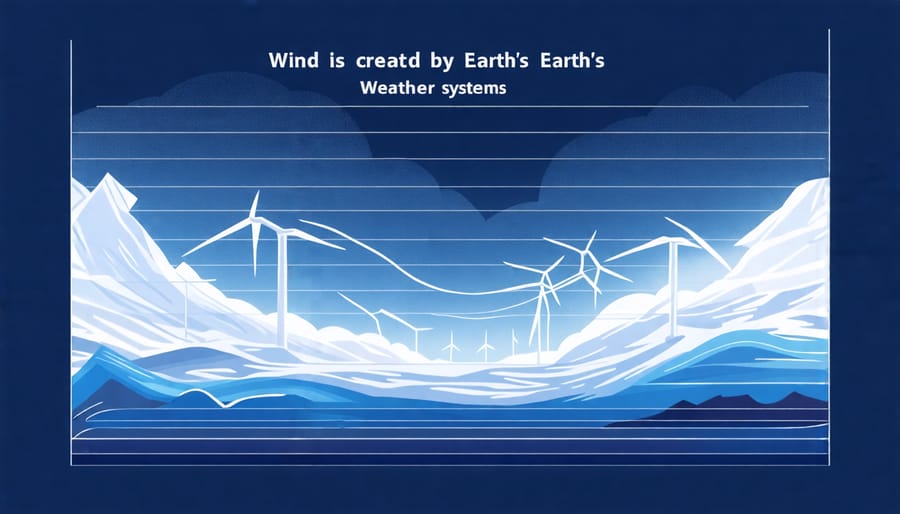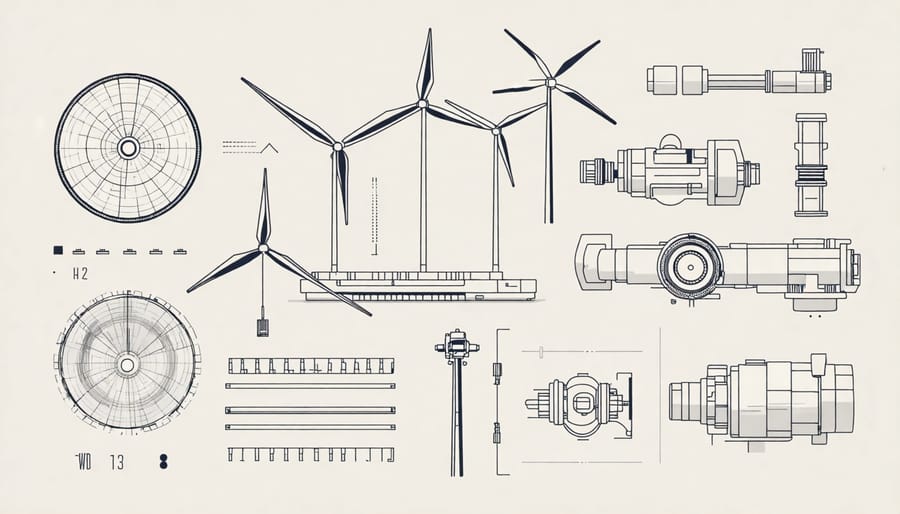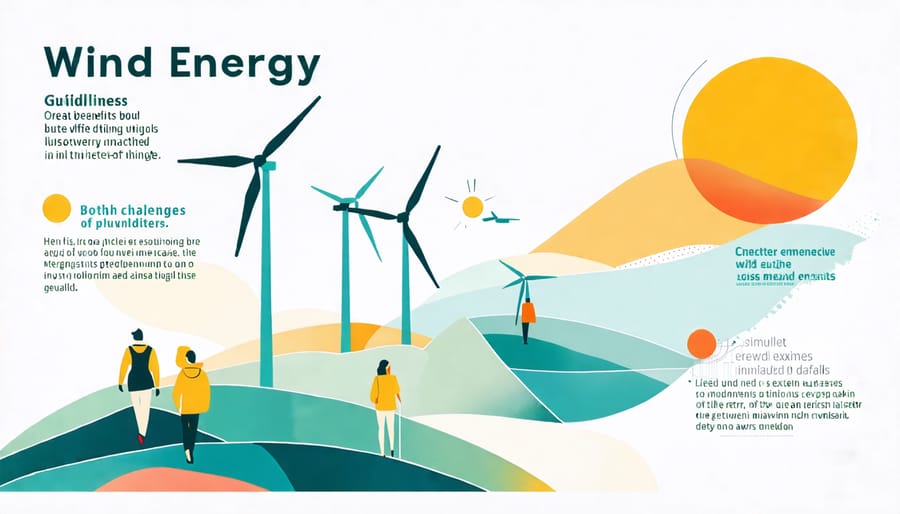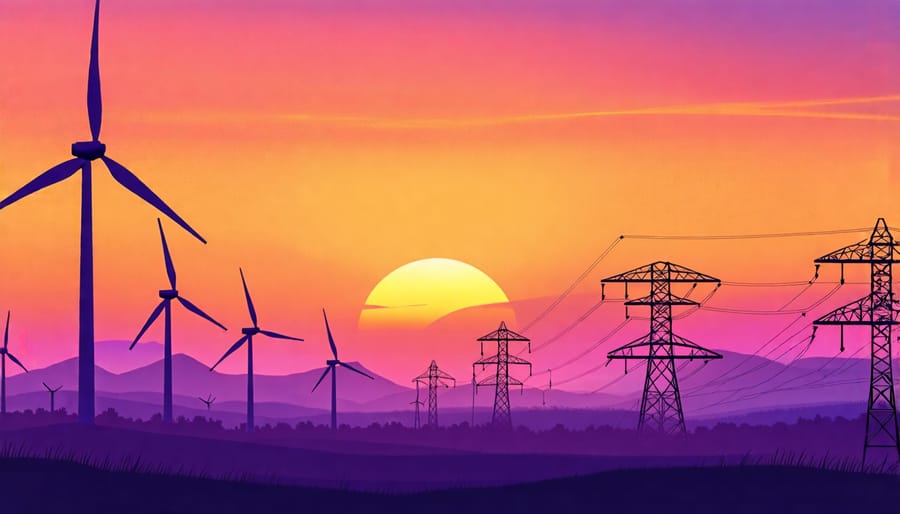Harness wind energy by first understanding the mechanics: capture kinetic energy from wind through turbines designed with large blades. Convert this kinetic energy into mechanical power using the rotor connected to a generator. Transform mechanical power into electricity that can be fed into the power grid to supply homes and businesses. Maximize efficiency by positioning turbines in areas with consistent, strong wind patterns, considering topographical studies and meteorological data. Embrace the future of sustainable energy by supporting advancements in turbine technology and smart grid integration.
The Basics of Wind Energy
What is Wind?
Wind is a dynamic movement of air produced primarily by the uneven heating of the Earth’s surface by the sun. This temperature difference creates air pressure variations, causing air to move from high-pressure areas to low-pressure regions. One key factor in this process is the rotation of the Earth, which influences wind patterns and creates the Coriolis effect, making wind systems more complex. Wind plays a vital role in shaping the Earth’s weather systems and climate, driving ocean currents and affecting precipitation patterns. Wind’s energy is harnessed through turbines, which transform kinetic energy into electricity, offering a clean and renewable energy source. Wind energy stands as a beacon of hope in the fight against climate change, with the potential to reduce carbon emissions and provide sustainable energy for generations to come. Understanding its origin and influence on weather systems is essential for appreciating wind’s potential as a renewable energy solution.

Harnessing the Power of Wind
Wind energy is captured through the use of wind turbines, remarkable devices that transform the kinetic energy in the wind into electricity. These towering structures, often standing as tall as a skyscraper, are equipped with large blades that spin when hit by the wind. As the blades turn, they rotate a rotor connected to a generator within the turbine. This generator, through electromagnetic induction, converts the mechanical rotation into electrical energy, ready to be fed into the power grid.
The efficiency of this process hinges on both the design of the turbine and the wind conditions at the installation site. Ideal locations are typically open plains, coastal areas, or offshore sites where winds are strong and consistent. Real-life success stories, like those of large wind farms in the U.S. and Europe, demonstrate the tangible benefits of wind energy—reduced carbon footprint and cost-effective power generation. Wind turbines not only symbolize sustainable innovation but also present a compelling glimpse into a cleaner, renewable future.
How Wind Turbines Work
Components of a Wind Turbine
A wind turbine is a marvel of modern engineering, transforming the kinetic energy of wind into usable electricity. At its heart is the rotor, comprised of large blades that capture the wind’s energy. These blades are crucial for the energy production. When wind currents hit the blades, they rotate around a hub. This spinning action transfers to the nacelle, a housing atop the turbine tower. Inside the nacelle, you’ll find a key component known as the gearbox, which increases the rotational speed needed for efficient electricity generation.
Another essential part is the generator, where the mechanical motion is converted into electrical power. These components work in harmony to ensure optimal energy conversion. Below, the tower stands tall, elevating the components to capture stronger winds and anchoring them securely to the ground. Information from sensors and control systems continually adjusts the turbine’s orientation through yaw motors to maximize efficiency, keeping its face to the wind.
Together, these components form an elegant solution to harnessing sustainable power. By understanding how each part functions, we can better appreciate the technological sophistication behind wind energy and its potential for creating a cleaner future.

The Mechanics of Energy Conversion
Wind energy conversion begins with the interaction of wind with the blades of a wind turbine. As the wind blows, it transfers kinetic energy to the blades, causing them to spin. The design of these blades is inspired by airplane wings, maximizing the capture of wind energy even at low speeds. This spinning motion turns a rotor, which is connected to a low-speed shaft.
To efficiently convert the mechanical energy from the rotor into usable electricity, the shaft is connected to a gearbox. The gearbox increases the rotational speed, transferring the energy to a high-speed shaft connected to a generator. Inside the generator, the motion of magnets past copper coils induces an electrical current, effectively transforming mechanical energy into electrical energy. This process exemplifies principles similar to those used in other power generation systems, demonstrating wind’s potential as a sustainable energy source.
Next, the electricity produced is directed to a transformer, usually located at the turbine’s base, which steps up the voltage to ensure efficient transmission over long distances. Finally, this electricity is integrated into the electrical grid, becoming a vital part of the renewable energy mix that powers homes and industries worldwide. As technology advances, the efficiency and capacity of wind turbines continue to grow, offering a promising future for wind energy as a cornerstone of clean energy solutions.
Benefits and Challenges of Wind Energy

Advantages of Wind Power
Wind power offers numerous environmental and economic advantages that make it an appealing renewable energy source. Environmentally, wind energy is a clean, sustainable option that dramatically reduces greenhouse gas emissions compared to fossil fuels. Harnessing kinetic energy from the wind to generate electricity results in no air or water pollution, making it an effective strategy in the fight against climate change. Moreover, wind power helps conserve precious water resources because it requires no water for cooling, unlike traditional power plants.
Economically, wind energy contributes to energy independence and price stability. By diversifying our energy mix, it minimizes reliance on imported fossil fuels, often subject to volatile price fluctuations. Furthermore, the wind industry stimulates local economies by creating jobs in manufacturing, installation, and maintenance. Regions investing in wind power have seen economic revitalization through increased business opportunities and rural development. Compared with other renewable options, such as Wind vs Solar, wind power often benefits from lower operational costs over time, making it both a cost-effective and environmentally responsible choice for expanding renewable energy portfolios.
Overcoming Challenges
Wind energy, a promising pillar of sustainable energy, faces several challenges that must be overcome to maximize its potential. Technically, the intermittency of wind is a significant hurdle, but advancements in energy storage technology and smart grid systems offer solutions to stabilize supply. For instance, integrating batteries with wind farms can ensure consistent energy output even when the wind isn’t blowing. Environmentally, concerns over the impact on bird and bat populations are being addressed through innovations like ultrasonic deterrents and turbine design improvements. These efforts aim to minimize the ecological footprint while harnessing wind power.
Societally, community acceptance can sometimes be a barrier due to aesthetic concerns or noise pollution. However, engaging communities through transparent dialogue and demonstrating the local economic benefits, such as job creation, can foster support. Projects like those in Denmark, where local ownership in wind farms is encouraged, showcase how involving community stakeholders can lead to successful implementation. By blending technological ingenuity with mindful community engagement, wind energy not only meets but often exceeds expectations, setting the stage for a greener future.
Innovations and Future Trends
Cutting-Edge Technology
In the world of renewable energy, wind power has seen incredible advancements, thanks in part to the latest innovations in technology. Enhanced turbine designs and the use of artificial intelligence are transforming how we capture and utilize wind. Modern turbines are taller and feature longer blades, allowing them to harness wind more efficiently, even at lower speeds. AI and machine learning are playing an essential role by optimizing wind farm operations through data analysis, predicting wind patterns, and minimizing downtime for maintenance. Floating turbines, another groundbreaking development, are making it possible to tap into deep-sea wind resources that were previously inaccessible. These innovations not only improve energy output but also help in reducing costs. The global push for sustainability is further accelerated by these advancements, making wind energy a potent force in the transition to cleaner energy solutions. This wave of technological progress promises a bright future for wind energy, offering hope to enthusiasts and experts alike.
The Future Landscape of Wind Energy
The future landscape of wind energy is set to be dynamic and transformative, driven by innovations that promise to enhance its efficiency and accessibility. Pioneering advancements in technology are paving the way for larger and more efficient turbines, which can harness wind power more effectively. According to industry experts, floating wind farms, capable of being positioned further offshore where winds are stronger, represent a significant shift in this sector. This evolution also opens up previously untapped regions for wind energy deployment. Additionally, projects integrating wind energy with other renewable sources, like solar power, are on the rise, aiming to produce a more consistent and reliable energy supply. As the demand for sustainable energy solutions increases, governmental policies and incentives continue to play a pivotal role in facilitating growth and addressing challenges in infrastructure and storage. The future of wind turbines is indeed promising, heralding a new era of cleaner, greener energy solutions that resonate with both environmental goals and economic viability.
Conclusion
Wind energy has emerged as a cornerstone in the pursuit of a sustainable and environmentally friendly future. Throughout this exploration, we’ve seen how harnessing the natural power of the wind can not only help reduce our reliance on fossil fuels but also minimize carbon emissions and promote energy independence. From the fascinating story of windmills through the ages to modern-day turbines, wind power has continually proven its adaptability and resilience. It’s inspiring to see communities and nations worldwide embracing this technology, bolstered by the decreasing costs and increasing efficiencies in wind energy systems. Wind farms, both onshore and offshore, are setting remarkable examples of how clean energy can be successfully integrated into our power grids. As we look to the future, the optimism surrounding wind energy is grounded in its potential to transform our landscapes into beacons of sustainability. The continued support from policymakers, coupled with technological innovations, promises a bright future where wind energy plays a pivotal role in achieving our global environmental goals.





